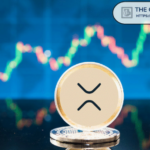XRP, a major cryptocurrency, has faced significant setbacks in recent days, falling below crucial price levels such as $0.60, $0.59, $0.57, and $0.55. This decline is largely attributed to various bearish factors affecting the broader crypto market.
Despite starting the year with a positive momentum, XRP has underperformed, plummeting by 16% in just 24 days. The recent price struggles have led to the breach of multiple support levels that previously acted as strong defenses against bearish pressure.
The primary catalyst for XRP’s slump can be traced back to the broader market collapse initiated by Bitcoin. In the past week alone, the global cryptocurrency market cap lost $130 billion, triggering a 7.7% decrease and an 11% decline in XRP’s value. This market-wide downtrend began after the SEC approved spot ETF products and was further intensified by large Bitcoin whales and long-term holders selling off their assets.
Another contributing factor to XRP’s downturn is the absence of a spot XRP ETF. While there has been speculation and desires for such a product due to XRP’s unique legal clarity, no asset manager has filed for it. As a result, investor confidence has waned, contributing to a lack of institutional interest and demand.
XRP whale dumps have also played a role in the cryptocurrency’s price collapse. Large transfers of XRP to exchanges for selling purposes have been observed, leading to a widespread selloff.
Furthermore, market sentiment and development activity on the XRP Ledger have also impacted XRP’s value. With significantly fewer monthly active developers compared to other mainstream networks, XRP’s development outlook remains bleak, and this metric has been highlighted as a key factor influencing price movements.
Despite these challenges, XRP has managed to defend the $0.51 threshold, currently trading at $0.5147. The asset’s resilience in the face of bearish pressure remains uncertain, and it will be interesting to see how XRP performs in the next market resurgence. As of now, trade volume has spiked by 28% amid the ongoing market downturn.









